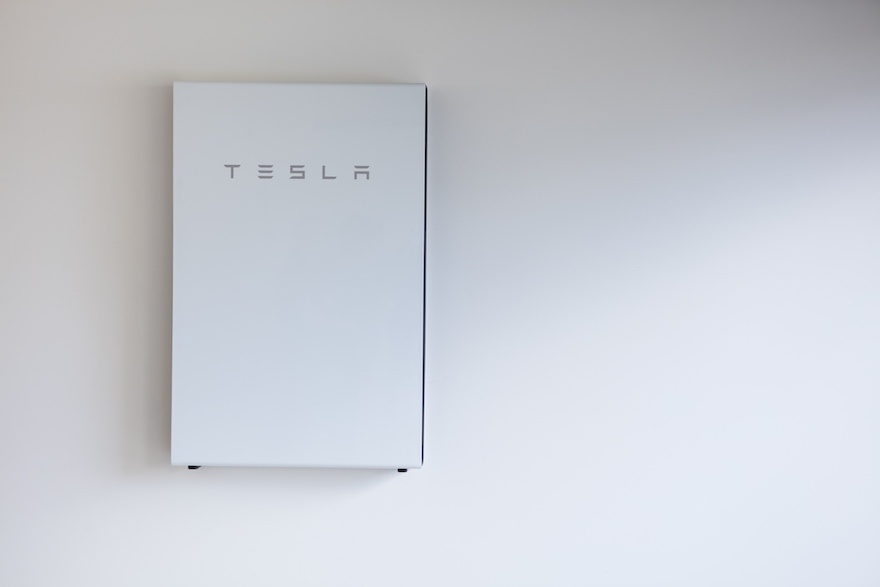

New data has shown that households solar batteries can be used to help run the national electricity grid, including to provide critical system security services and to respond to price signals to help push down costs for all consumers.
The data, supplied by Tesla, has been analysed in a knowledge sharing report published by the Australian Energy Market Operator, the first fruit from AEMO’s virtual power plant demonstrations – in this case a South Australia trial with Energy Locals, in a consortium with Tesla.
The Tesla Energy Locals VPP, which ultimately aims to include up to 50,000 households, is currently at phase two of its roll-out, with 1100 installed home energy systems comprising solar PV and a Tesla Powerwall battery.
As Energy Locals explains here, phase two is also about testing the systems operating together and their ability to generate enough to cheaply power an 320 Housing SA households whose properties are not suitable for the installation of a home energy system.
For AEMO – whose draft Integrated System Plan assumes significant uptake and participation of VPPs in the National Electricity Market between now and 2040 – the South Australia data offers its first real glimpse at how the coordination of distributed energy resources might work on the National Energy Market.
And as the AEMO report notes, the verdict is resoundingly positive. On one hand, it demonstrates that VPPs can benefit participating consumers by sharing the value earned through participating in FCAS or responding to energy market prices.
On there other, it shows that VPPs can benefit all other consumers by creating more competition to reduce prices and even potentially defer or displace the need for large-scale generation assets.
AEMO comes to these conclusions based on the data collected around five separate examples of the VPPs response to different events on the grid.
They include the October 2019 unexpected failure of the largest generating unit at the Kogan Creek power station, taking out 748MW of capacity and power system frequency down to 49.61 Hz, which is below the normal operating range.
On that occasion, the SA VPP detected this frequency excursion and responded immediately to inject power into the system and aid frequency recovery, as illustrated in Figure 1 below.
Another example documented is the response to the November 16, 2019, Victoria and South Australia regional separation event, which left South Australian islanded from the rest of the NEM power system for nearly five hours.
In this case, the data shows that while the VPP responded to the initial, it under-delivered on the 1MW of FCAS it was expected to deliver.
As Energy Locals and Tesla explain in the report, this was because fewer systems than expected had the appropriate frequency support settings enabled, resulting on only 83% of the expected response, or 828 kilowatts (kW) rather than 1 MW bid.
But as Tesla and Energy Locals go on to explain, another benefit of VPPs is that “once identified, this issue was fixed immediately by remotely reconfiguring the non-compliant systems.
“Since this event, Tesla informs AEMO that it has introduced daily checks on all systems to ensure they are responding according to the expected configuration requirements. It is expected that this approach will mitigate the risk of any future under-delivery.”
A third example looks at the VPPs response to a December 10 2019 event, where the NEM experienced both high (>50.15Hz) and then low (<49.85Hz) frequency events within 45 minutes of each other.
In this case, the report shows that the SA VPP responded immediately – first to charge the batteries to lower system frequency, and then to discharge the batteries to raise system frequency, shown in Figure 3 below.
Of course, there is a fair bit of work to do, yet. As AEMO notes, these are early lessons learnt from just one of the planned VPP Demonstration trials, and used to inform next steps.
Among those next steps will be consideration of a number of regulatory arrangements for amendment, particularly around potential changes to frequency control ancillary services (FCAS) control on the NEM.
In its own feedback on the trial so far, Tesla said the South Australia VPP had provided significant opportunities to demonstrate the capability and revenue earning opportunities for aggregated distributed energy resources on the NEM.
“Specifically, the capability of aggregated assets to rapidly respond to frequency deviations and provide critical system security services,” Tesla said.
“This has also meant VPPs are able to access revenues from markets that aggregated assets, particularly smaller aggregated assets, have traditionally been excluded from.”
Sophie is editor of One Step Off The Grid and deputy editor of its sister site, Renew Economy. Sophie has been writing about clean energy for more than a decade.
This post was published on April 2, 2020 10:28 am
Rooftop solar installs hit the doldrums as consumers wait to see what the major parties…
Report warns excluding cooktops from residential gas phase-out could take a big bite out of…
US energy economist says we have got our electricity tariffs all wrong, by focusing almost…
Wayne Smith from the Smart Energy Council on what to expect from the federal home…
OpenSolar joins forces with LoanOptions.ai to help consumers access finance to invest in rooftop PV…
Both major political parties are being urged to cut the price of household solar batteries…